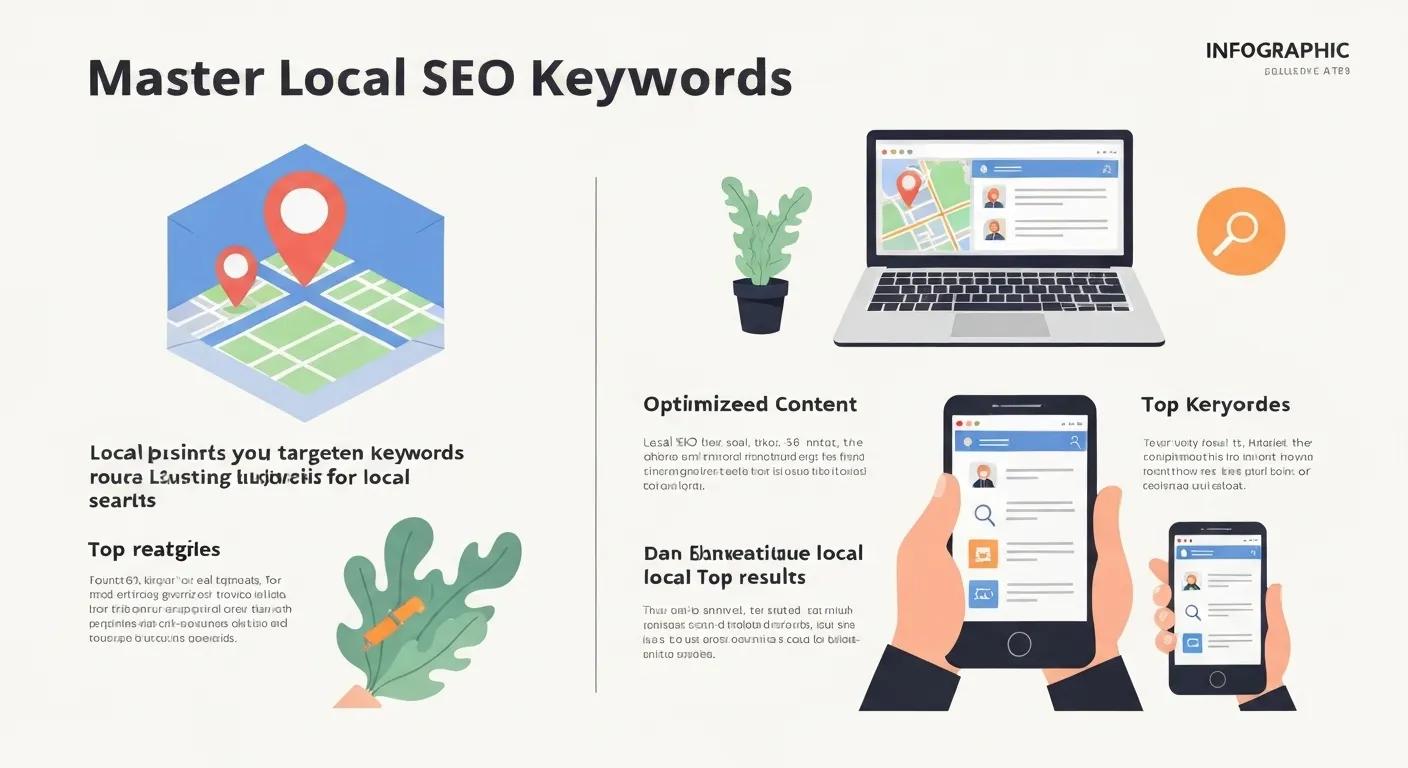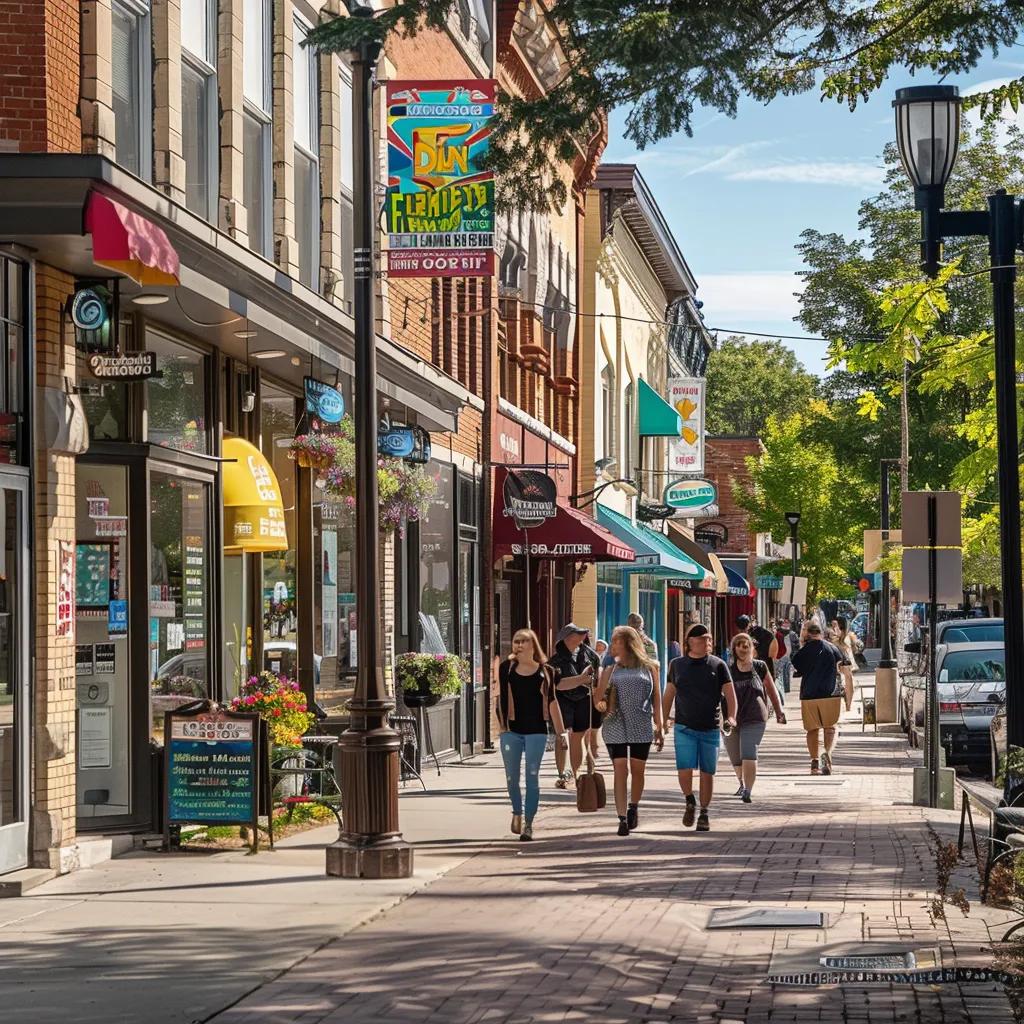Boost Local SEO with Citations
Local citations — mentions of a business’s name, address, and phone (NAP) across the web — act as verification signals that search engines use to confirm a business’s existence and relevance, and they directly influence local search visibility and conversions for retail brands. This article explains how citations work, why structured and unstructured mentions matter, and what apparel retailers — especially lake and boating lifestyle brands — should do to turn listings into measurable foot traffic and online sales. Readers will learn practical NAP consistency practices, Google Business Profile optimization steps, high-value citation sources for apparel stores and pop-up events, and monitoring tactics to measure citation ROI. The guide also maps citation strategies to metrics like GBP views, direction requests, and referral traffic so store managers and marketers can prioritize actions that move the needle. Throughout the article we use semantic relationships like entity → relationship → entity to clarify how citations interact with local algorithms, and we include actionable lists and tables for immediate implementation. If you manage a clothing brand serving boating and lake communities, this piece will show how citations can be a reliable bridge from discovery to purchase.
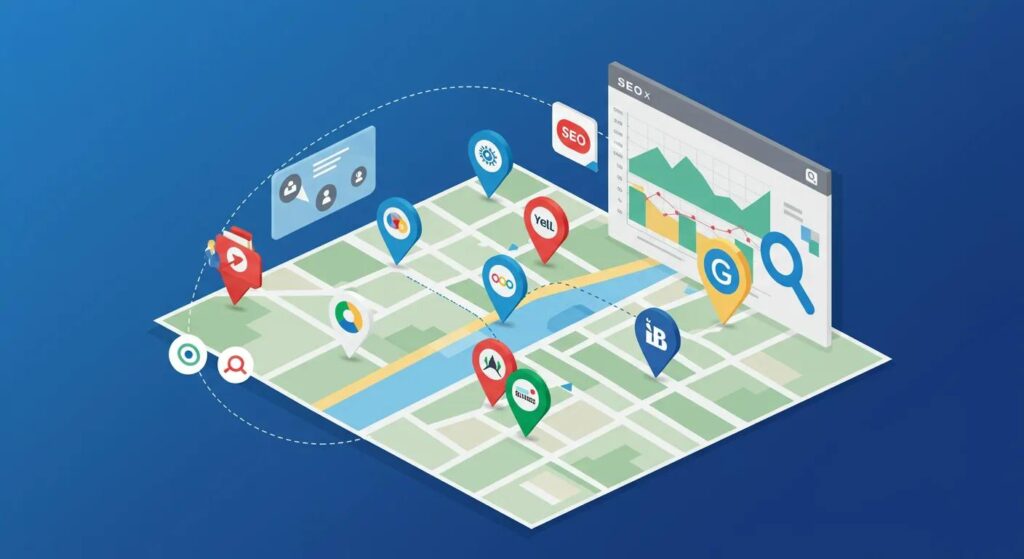
What Are Local Citations and Why Do They Matter for Local SEO Ranking?
Local citations are third-party mentions of a business’s core information (name, address, phone) and related attributes that help search engines verify and rank local entities, and they work because consistent citations signal legitimacy, relevance, and authority. Citations influence local algorithms by corroborating the canonical NAP and by linking a business to categories, events, and community signals that align with user intent. For apparel and local retail, this verification improves local pack inclusion and increases the likelihood that local shoppers discover product availability and event details. Understanding citation types and their search impact is the first step toward building sustainable local visibility and reliable discovery.
What Is a Local Citation and How Does It Influence Local Search?
A local citation is any online mention that includes a business’s identifying attributes such as name, address, phone, or service descriptions, and it influences local search by providing corroborating signals that search engines use to match queries with verified entities. When multiple authoritative sources repeat the same NAP and category information, search engines treat the business as a stable local entity, which improves indexing and ranking probability in the Local Pack. Citations also create referral pathways for users who search for product categories like boating jackets or lake life apparel, turning discovery into actions such as calls and direction requests. This verification loop — user search → Local Pack → listing signals — underscores why brands prioritize citation accuracy to capture nearby shoppers.
What Are Structured vs. Unstructured Citations?
Structured citations are formal directory listings with dedicated fields (name, address, phone, category) on platforms like Yelp or local chamber sites, while unstructured citations are mentions inside articles, event calendars, social posts, or blog write-ups that may not follow a strict schema. Structured sources are easier to audit and update and typically carry stronger ranking influence because their fields feed directly into local knowledge systems, whereas unstructured mentions boost topical relevance and community visibility by creating contextual signals. Both types matter: structured citations establish foundational accuracy and unstructured mentions amplify local relevance and storytelling around pop-ups and events.
Different citation types offer complementary benefits:
- Structured citations provide clear NAP fields that search engines index reliably.
- Unstructured citations add contextual signals and organic referral traffic from community pages.
- Event and social mentions boost temporal relevance for pop-up shops and seasonal drops.
These citation types work together to increase both algorithmic trust and human discovery.
How Do Citations Build Trust and Authority for Local Businesses?
Citations act as corroborative evidence that a local business is real, consistent, and connected to its community; search engines aggregate these signals to build entity-level trust and authority. High-authority directory mentions and repeated references across relevant local sites raise a business’s perceived credibility, while inconsistent or sparse citations can create ambiguity that suppresses ranking potential. For example, a Docksyde pop-up listed consistently on local event calendars, regional directories, and a brand Google Business Profile creates a convergence of signals that increases visibility in map results for boating apparel queries. Building citation authority therefore strengthens both algorithmic trust and user confidence when shoppers evaluate where to buy apparel locally.
| Citation Source | Authority | Typical Ranking Impact |
|---|---|---|
| Google Business Profile | Very High | Strong local pack influence and discovery |
| Major directories (Yelp, TripAdvisor) | High | Improves trust and referral traffic |
| Local chamber / tourism sites | Medium-High | Niche relevance for local audiences |
| Event calendars / pop-up listings | Medium | Temporal spikes for seasonal visibility |
After clarifying citation types and impacts, it helps to see specific threats to NAP consistency and practical remedies that protect those verification signals.
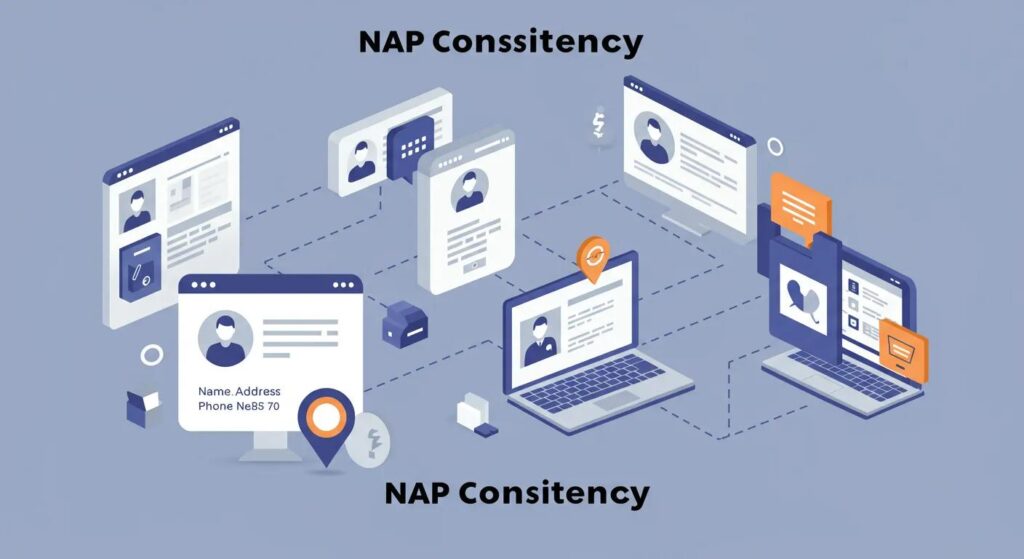
How Does NAP Consistency Affect Local SEO and Citation Impact?
NAP consistency — the precise alignment of a business’s Name, Address, and Phone across online listings — is a fundamental verification signal that search engines use to associate queries with the correct local entity, and inconsistent NAP data can fragment authority and lower local rankings. Consistent NAP supports entity resolution, which in turn improves indexing, trust, and the accuracy of user-facing listings like the Local Pack. Brands that maintain a canonical source of truth and propagate it across directories and event pages avoid ranking volatility and missed conversions. Implementing an audit cadence and canonicalization process ensures citations remain a strength rather than a liability.
What Is NAP Consistency and Why Is It Crucial for Local Ranking?
NAP consistency means every public listing uses the same business name spelling, address formatting, and phone number, and it is crucial because search engines use matching data to confirm that multiple mentions refer to one entity. Discrepancies — such as abbreviated addresses, alternate phone formats, or differing trade names — introduce noise that can prevent algorithms from consolidating ranking signals. Maintaining a canonical NAP on the brand website and Google Business Profile serves as the authoritative reference for directories and partners. Consistent NAP therefore directly contributes to improved indexing and a higher probability of appearing in localized search results.
How Can Inconsistent NAP Data Harm Your Local SEO Performance?
When NAP data is inconsistent across platforms, search engines may treat listings as separate entities or assign lower confidence to the business, which can cause ranking drops and reduced visibility in the Local Pack. In practical terms, inconsistent NAP can lead to misrouted calls, incorrect directions, and customer frustration that reduces conversions from local searches. For apparel stores relying on foot traffic and event attendance, these user experience failures translate into lost sales and weaker local reputation signals. Addressing inconsistency promptly prevents these direct harms and preserves the conversion path from local discovery to purchase.
What Are Best Practices for Maintaining NAP Consistency Across Listings?
Maintaining NAP consistency requires creating a canonical source of truth (website/GBP), scheduling regular audits, and using citation management tools to automate updates and corrections across key platforms. Begin with a single authoritative NAP on the brand website and Google Business Profile, then prioritize high-authority directories for manual verification. Tools like BrightLocal and Semrush Local help discover mismatches and manage bulk fixes, while an annual audit ensures seasonal changes or pop-up events do not introduce discrepancies. These practices form a repeatable workflow for keeping citations accurate and effective.
Best practices include:
- Establish a canonical NAP on the website and GBP.
- Audit top directories quarterly and fix discrepancies.
- Use citation tools to scale updates and monitor health.
Following this checklist reduces manual errors and keeps local listings aligned with customer-facing information.
How Does NAP Consistency Build Search Engine Trust and User Experience?
Consistent NAP consolidates signals that search engines use to recognize an entity reliably, which increases trust and ranking potential while delivering a seamless user journey from search to store visit or purchase. When users see uniform information across listings and maps, they are more likely to trust directions, call the store, or engage with product pages — behaviors that feed back into GBP engagement metrics. This virtuous cycle — consistent data → better rankings → more user actions → continued ranking improvement — is central to sustained local SEO performance and higher conversion rates.

How to Optimize Your Google Business Profile for Maximum Citation Benefits?
Optimizing Google Business Profile (GBP) translates citation efforts into visible local discovery by completing profile fields, using accurate categories, publishing product and event posts, and maintaining an active engagement rhythm with customers. GBP acts as the single most important structured citation and should be treated as the canonical entity reference for all other listings. For apparel retailers, including high-quality photos of products in local contexts, listing product categories accurately, and creating event posts for pop-ups improves both click-throughs and map placements. A focused GBP strategy converts citation investments into measurable local visibility gains.
What Key Elements Should Be Included in Your Google Business Profile?
A complete GBP includes a verified business name, precise category selection, accurate address and service area, phone number, up-to-date hours (if applicable), engaging photos, product listings, and event posts; each element contributes to the profile’s relevance and usability. For apparel stores, product photos that show items in lake or boating settings increase relevance for local lifestyle searches, while clear categories ensure the listing matches query intent. Including product attributes, seasonal offers, and a well-written business description helps GBP surface for the right searches. Ensuring these fields are filled and optimized provides a robust foundation for other citation efforts.
How Does GBP Optimization Improve Local Pack and Map Pack Rankings?
GBP optimization improves Local Pack chances by increasing relevance and user engagement signals — completeness and activity tell Google that the entity is active and trustworthy, while actions like calls, website visits, and direction requests send behavioral confirmations that boost ranking algorithms. A fully optimized GBP appears more frequently in discovery and branded searches, and local engagement data can create ranking momentum during seasonal events or product launches. Visual assets and product listings also increase click-through rates, which reinforces positive ranking feedback and visibility in map results.
What Are Effective GBP Posting and Engagement Strategies for Apparel Stores?
Apparel stores should use GBP posts to announce pop-up events, new product drops, limited-time offers, and community collaborations, and they should actively respond to Q&A entries and reviews to demonstrate responsiveness. A simple content calendar might include weekly product highlights, biweekly event announcements, monthly style guides tied to local activities, and immediate replies to customer reviews. Encouraging customers to mention specific products or locations in reviews improves relevance for long-tail queries. Consistent posting and engagement maintain freshness signals and support citation-driven discovery.
Sample GBP posting cadence:
- Weekly product highlight with lifestyle photo.
- Event announcement two weeks before a pop-up.
- Customer testimonial post once a month.
- Q&A updates responding within 48 hours.
How to Use GBP Insights to Measure Citation Impact on Local Visibility?
GBP Insights provides metrics such as discovery searches, direct searches, listing views, photo views, calls, and direction requests; tracking these alongside citation activities reveals the impact of new listings or updates. Correlate spikes in discovery searches or direction requests with recent citation submissions or event listings to assess effectiveness, and use referral data from directory visits to attribute web traffic. Regularly export insight trends and align them with citation audit dates to measure ROI and prioritize future builds. Interpreting these metrics helps refine citation strategies for better outcomes.

What Are the Best Strategies for Building High-Quality Local Citations?
High-quality citation building prioritizes authoritative, relevant sources, and niche local channels before broad volume-driven approaches, because a few high-value mentions often outperform many low-quality listings. For apparel retailers focused on lake and boating communities, prioritize GBP, local chamber directories, tourism/event calendars, and fashion or outdoor niche directories that mention product categories. Combine structured submissions with outreach for unstructured coverage—local bloggers, event partners, and sponsorships—to generate contextual mentions that drive both SEO and community interest. A prioritized strategy yields measurable discovery and sales benefits.
Which Citation Sources Are Most Valuable for Apparel and Local Retailers?
Valuable sources include Google Business Profile, major directories like Yelp, niche fashion and outdoor directories, local chamber and tourism sites, and event listing platforms that reach active local audiences. GBP remains the most influential structured citation, followed by high-authority directories that influence trust signals, while niche and event sources deliver targeted relevancy for seasonal and pop-up promotions. Prioritizing sources based on local relevance and domain authority maximizes the SEO and referral return for apparel brands.
How to Identify and Leverage Structured Citation Opportunities?
Identify structured opportunities by auditing existing listings, searching for industry- or locality-specific directories, and using tools to discover where competitors are listed; then submit consistent NAP data and category tags. Automation through citation services or APIs helps scale bulk submissions, while manual verification on high-value sites ensures accuracy. Track submissions using a central spreadsheet or tool and confirm live indexing to validate impact. This methodical approach uncovers gaps and captures authoritative placements that improve local visibility.
What Role Do Local Events and Pop-Up Shops Play in Citation Growth?
Local events and pop-up shops create temporal citation opportunities through event calendars, local news mentions, and tourism listings, which generate unstructured and structured mentions that raise short-term visibility and long-term relevance. Event listings should include consistent NAP and link back to canonical store or event pages to consolidate signals, and follow-up coverage creates additional mentions and backlinks. For apparel brands, pop-ups tied to community festivals or boating events can create concentrated bursts of discovery and conversions when paired with targeted citation pushes.
How Can Visual Storytelling Enhance Citation Effectiveness?
Pairing citation efforts with strong visual storytelling — lifestyle photos of apparel in local settings, UGC from customers at events, and optimized ALT text — increases user engagement and relevance signals for local queries. Visuals help listings stand out, improve click-through rates, and generate social shares that create additional unstructured citations. Encourage customers to tag the brand in location-enabled posts during pop-ups to amplify local mentions organically. This integrated visual approach strengthens both search engine signals and human discovery.
| Source Type | Typical Use | Strategic Benefit |
|---|---|---|
| GBP & Directories | Structured listings and product info | High authority and reliable discovery |
| Event Calendars | Pop-up scheduling and promotion | Temporal visibility and local engagement |
| Local PR / Bloggers | Articles and mentions | Contextual relevance and referral traffic |
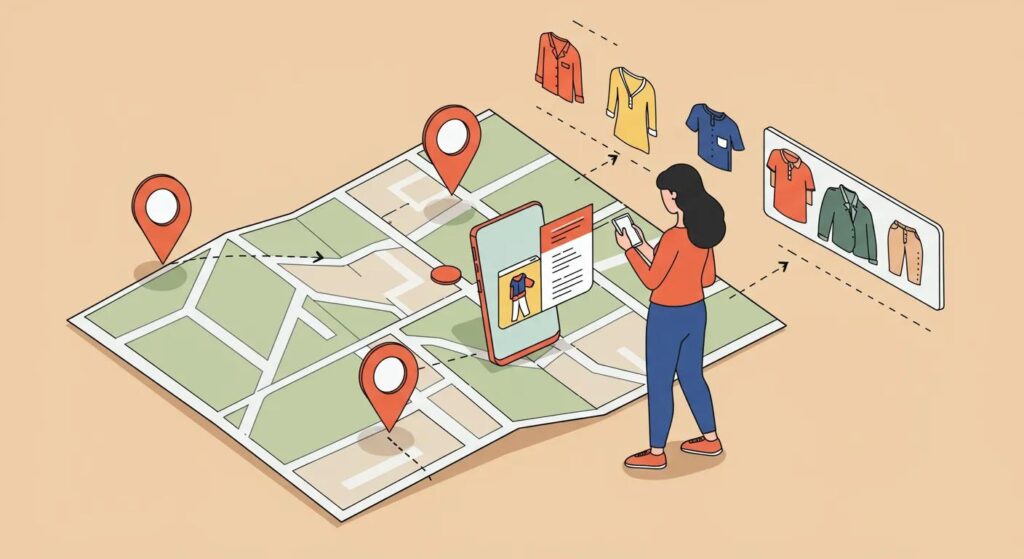
How Do Local Citations Directly Impact Apparel Sales and Customer Discovery?
Citations impact apparel sales by increasing placement in the Local Pack and Maps, driving discovery searches that convert to website visits, direction requests, and purchases; measurable gains come from a combination of citation quality and GBP optimization. High-quality citations funnel local intent traffic into conversion pathways — product pages, event RSVPs, or in-store visits — and well-structured tracking aligns these interactions with revenue outcomes. By measuring citation-driven KPIs and adjusting submission priorities, apparel brands can translate visibility into predictable sales lifts.
What Is the Relationship Between Citation Quantity and Local Search Visibility?
The relationship balances quantity with quality: a baseline volume of consistent, authoritative citations helps search engines verify an entity, but beyond that baseline, high-authority and locally relevant citations produce stronger visibility returns than sheer numbers. Studies and industry experience indicate that correcting or adding citations on high-authority sites yields larger ranking shifts than dozens of low-quality mentions. Therefore, brands should aim first for authoritative placements and then scale quantity with attention to relevance and NAP accuracy to maintain organic momentum.
How Do Citations Influence Foot Traffic and Online Apparel Purchases?
Citations increase GBP views and map placements, which lead to direction requests and calls for in-store purchases, while product mentions in listings and event pages drive website visits and online conversions; these behaviors form a measurable funnel from discovery to sale. For example, a pop-up event listed in multiple local calendars can create a spike in direction requests and product page views during the event window, translating into immediate sales and sustained web traffic. Linking citation updates to promotional landing pages enables clearer attribution of online purchases to citation activity.
| Entity | Metric | Impact |
|---|---|---|
| Local directory listing | Referral visits per month | +10–30% targeted traffic (example uplift range) |
| Event calendar mention | Direction requests | Immediate spike in foot-traffic during event |
| GBP update (photos/products) | Listing views and clicks | Improved conversion from discovery to purchase |
What Metrics Should Apparel Brands Track to Measure Citation ROI?
Apparel brands should track Local Pack rankings, GBP discovery and action metrics (calls, directions, website clicks), referral traffic from directory sources, event-driven conversion rates, and NAP consistency scores to measure citation ROI. Use Google Analytics to set up conversion goals for online purchases tied to directory referrals and monitor GBP Insights for offline actions like calls and direction requests. Combining these data points enables marketers to quantify the lift from citation campaigns and prioritize the channels with the best cost-to-conversion ratio.
How Can Citation Management Support Long-Term Local SEO Growth?
Ongoing citation management — routine audits, scheduled updates for seasonal changes, and strategic outreach for authoritative mentions — creates cumulative authority that sustains local search presence over time. Establish a 3–12 month roadmap that aligns citation pushes with product seasons and pop-up schedules to maximize temporal relevance. Automate bulk updates where possible and reserve manual outreach for high-value placements to maintain accuracy and authority. Sustained maintenance and strategic growth transform citations from a one-time task into a scalable source of local demand.
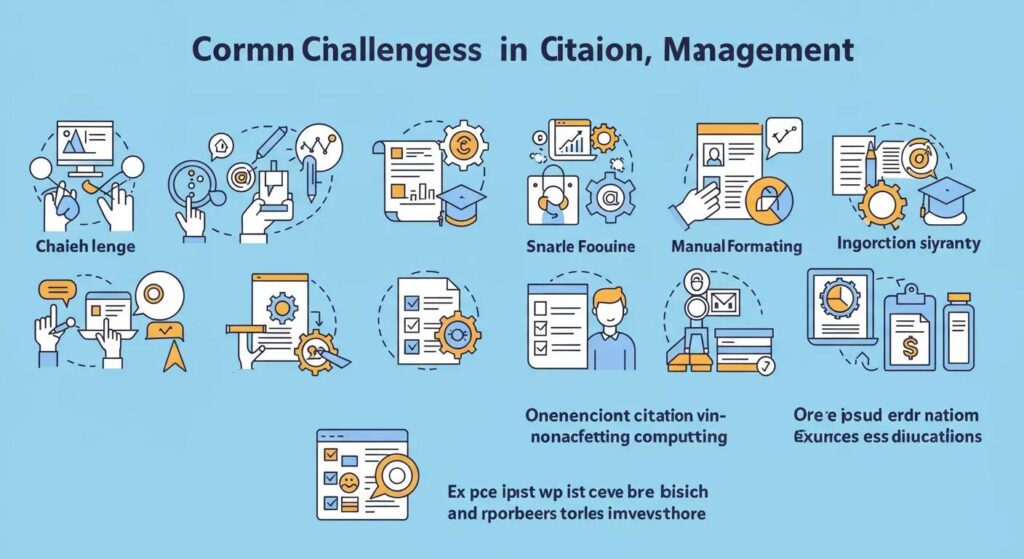
What Are Common Challenges and Solutions in Managing Local Citations?
Common challenges include inconsistent listings, duplicate entries, time-sensitive event NAP handling, and adapting to AI/entity-first indexing; solutions combine audit workflows, canonicalization, tool-assisted fixes, and richer structured data. Recognizing and prioritizing high-impact fixes prevents small errors from cascading into ranking losses or customer confusion. The sections below provide quick detection methods, remediation priorities, and practical tools to maintain citation health.
How to Detect and Fix Citation Inconsistencies Quickly?
Detect inconsistencies by running a prioritized audit that checks GBP against the website and top directories, then triage fixes by authority and traffic impact; using automation tools speeds remediation while manual verification ensures accuracy on critical sites.
A five-step audit workflow includes:
- Export current listings;
- Compare to canonical NAP;
- Identify high-authority mismatches;
- Submit corrections;
- Monitor reindexing.
Tools such as BrightLocal and Semrush Local can automate discovery and tracking, enabling teams to resolve the biggest issues first and document the fixes for future audits.
Local SEO Optimization for Retailers: Boosting Visibility and Conversions
The Purpose of the presented research is to substantiate the importance of the local optimization of the retailer’s business for search engines to increase organic traffic; to represent insights and give practical recommendations for retailers regarding local optimization of their business in Google as part of an effective marketing strategy; to create the typical valid data micromarking (by the example of the Ukrainian retailer), which will contribute to an advantageous placement in the Local Pack in comparison with competitors, and increase organic traffic and conversion.
Business optimization in the digital age: Insights and recommendations, A Natorina, 2020
What Are the Risks of Duplicate or Inaccurate Citations?
Duplicate or inaccurate citations can fragment signals, cause ranking drops, misdirect customers, and even trigger profile suspensions when conflicting information appears across platforms. These risks result in lost calls, failed directions, and negative user experiences that reduce the likelihood of conversion from local searches. Prioritizing duplicate removal on high-authority sites and correcting inaccuracies quickly preserves both algorithmic trust and customer reliability. Addressing these risks proactively safeguards the revenue streams tied to local discovery.
How to Keep Citations Updated for Seasonal or Pop-Up Apparel Events?
For seasonal or pop-up events, create event pages linked to canonical store or brand pages and use consistent NAP for temporary locations while clearly marking event dates to prevent long-term confusion. Submit event listings to local calendars and tourism sites with matching information and then remove or archive them after the event window to avoid stale entries. Maintain a documented process for temporary NAP additions and ensure cross-links to permanent pages so citations aggregate to the primary entity while capturing temporal visibility during the event.
Event citation management steps:
- Create a canonical event page on the brand site.
- Submit consistent event details to local calendars.
- Link event pages back to main store pages to consolidate signals.
This template ensures temporary events support long-term entity authority rather than fragment it.
How Does AI and Entity-First Indexing Affect Citation Strategies?
AI and entity-first indexing place greater emphasis on comprehensive, structured entity data and rich contextual signals, meaning citations must be accurate, semantically rich, and supplemented with structured data like schema to remain effective. Search engines increasingly resolve entities via relationships and attributes, so supplying consistent NAP, descriptive product and event markup, and rich text that defines the brand’s relationships (e.g., pop-ups, community partnerships) improves indexing. Adapting citation workflows to include schema and entity descriptions reinforces the brand’s presence in AI-driven local results.
| Issue | Root Cause | Fix / Tool |
|---|---|---|
| Inconsistent NAP | Multiple unsynced listings | Audit + BrightLocal or Semrush Local |
| Duplicate entries | Multiple submissions or data imports | Identify duplicates and request merges |
| Stale event listings | No removal process post-event | Event page archiving + calendar updates |
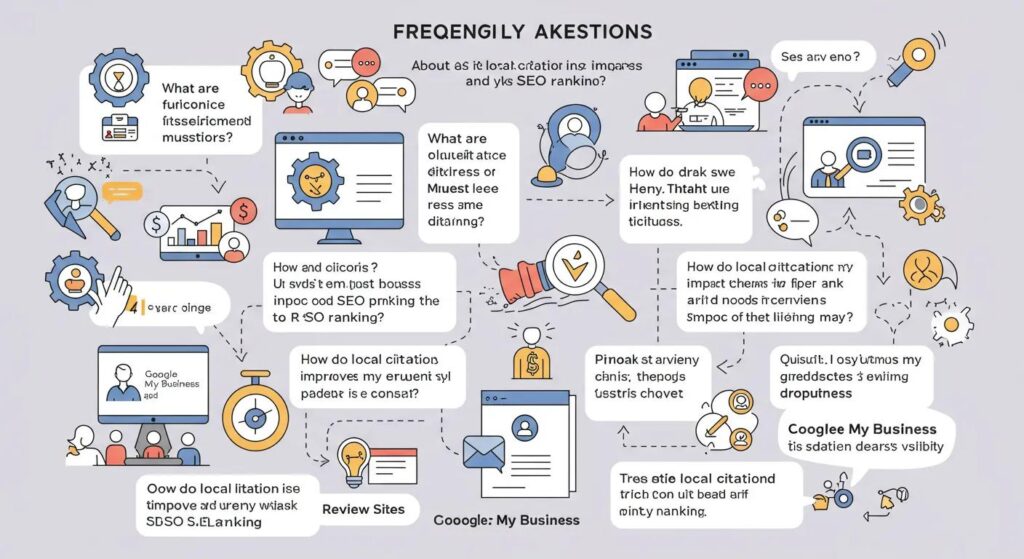
What Are Frequently Asked Questions About Local Citations and SEO Ranking?
Why Are Local Citations Still Important for SEO in 2025?
Local citations remain important because they provide verifiable entity signals that search engines and AI models use to resolve businesses in local contexts, and recent indexing trends continue to reward consistent, authoritative mentions. While AI enhances ranking nuance, the underlying need for reliable entity data persists, and citations remain a measurable factor in local discovery and trust.
How Do Local Citations Benefit Google Business Profile Performance?
Citations benefit GBP by corroborating the profile’s NAP and category data, which improves discovery relevance and increases the chance of appearing in local packs and map results; consistent citations also support higher GBP engagement metrics. Accurate external mentions reduce confusion and funnel more qualified traffic to the profile, amplifying visibility.
What Is the Impact of Local Pack and Map Pack on Apparel Store Visibility?
Appearing in the Local Pack or Map Pack places an apparel store directly in front of high-intent local shoppers, increasing direction requests, calls, and immediate product discovery; this visibility often yields higher conversion rates than organic listings alone. Optimizing citations and GBP improves the likelihood of securing these placements.
How Can Apparel Brands Use Citations to Outrank Competitors Locally?
Apparel brands can outrank competitors by prioritizing authoritative citations, maintaining strict NAP consistency, optimizing GBP content and photos, and leveraging niche local directories and event calendars relevant to boating and lake lifestyles. Combined, these tactics create stronger entity signals and more local relevance than competitors who rely on sporadic or low-quality mentions.






